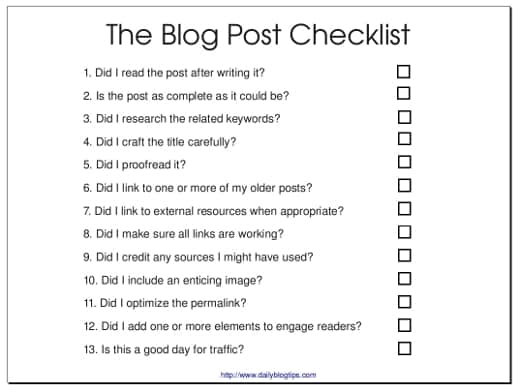28 Ways to Make Money with Your Website
There are several lists with “ways to make money with a website” on the
Internet, but none of them seem to be complete. That is why I decided to
create this one. If you know a method that is not listed below, just
let us know and we’ll update it.
Notice that ways to make money with a website are different from ways to make
more
money from it. Methods to increase your traffic or click-through rate
will help you make more money, but they do not represent a method of
making money per se.
For example, one could suggest that blending AdSense ads with the
content is a way to make money from a website. In reality it’s not; it’s
just a way to make more money by improving your ad click-through rate.
The real monetization method behind it is a PPC ad network.
The list is divided into direct and indirect methods, and examples and links are provided for each point. Enjoy!
Direct Methods
1.
PPC Advertising Networks
Google AdSense is the most popular option under this category, but
there are also others. Basically you need to sign up with the network
and paste some code snippets on your website. The network will then
serve contextual ads (either text or images) relevant to your website,
and you will earn a certain amount of money for every click.
The profitability of PPC advertising depends on the general traffic
levels of the website and, most importantly, on the click-through rate
(CTR) and cost per click (CPC). The CTR depends on the design of the
website. Ads placed abode the fold or blended with content, for
instance, tend to get higher CTRs. The CPC, on the other hand, depends
on the nice of the website. Mortgages, financial products and college
education are examples of profitable niches (clicks worth a couple of
dollars are not rare), while tech-related topics tend to receive a
smaller CPC (sometimes as low as a couple of cents per click).
The source of the traffic can also affect the overall CTR rate.
Organic traffic (the one that comes from search engines) tends to
perform well because these visitors were already looking for something,
and they tend to click on ads more often. Social media traffic, on the
other hand, presents terribly low CTRs because these visitors are
tech-savvy and they just ignore ads.
List of popular CPC advertising networks:
2.
CPM Advertising Networks
CPM advertising networks behave pretty much as PPC networks, except
that you get paid according to the number of impressions (i.e., page
views) that the ads displayed on your site will generate. CPM stands for
Cost per Mille, and it refers to the cost for 1,000 impressions.
A blog that generates 100,000 page views monthly displaying an
advertising banner with a $1 CPM, therefore, will earn $100 monthly.
CPM rates vary with the network, the position of the ad and the
format. The better the network, the higher the CPM rate (because they
have access to more advertisers). The closer you put the ad to the top
of the page, the higher the CPM. The bigger the format (in terms of
pixels), the higher the CPM.
You can get as low as $0,10 and as high as $10 per 1,000 impressions
(more in some special cases). CPM advertising tends to work well on
websites with a high page views per visitor ratio (e.g., online forums,
magazines and so on).
List of popular CPM advertising networks:
3.
Direct Banner Advertising
Selling your own advertising space is one of the most lucrative
monetization methods. First and foremost because it enables you to cut
out the middleman commissions and to determine your own rates. The most
popular banner formats on the web are the 728×90 leaderboard, the
120×600 skyscraper, the 300×250 rectangle and the 125×125 button.
The downside of direct banner advertising is that you need to have a
big audience to get qualified advertisers, and you will need to spend
time managing the sales process, the banners and the payments.
Related links:
4.
Text Link Ads
After Google declared that sites selling text links without the
nofollow tag would be penalized, this monetization method became less
popular.
Many website owners are still using text links to monetize their sites, though, some using the nofollow tag and some not.
The advantage of this method is that it is not intrusive. One can
sell text links directly through his website or use specialized networks
like Text-Link-Ads and Text-Link-Brokers to automate the process.
Text link marketplaces and networks:
5.
Affiliate Marketing
Affiliate marketing is a very popular practice on the Internet. Under
this system you have a merchant that is willing to let other people
(the affiliates) sell directly or indirectly its products and services,
in exchange for a commission. Sometimes this type of advertising is also
called CPA (cost per action) or CPL (cost per lead) based.
Affiliates can send potential customers to the merchant using several tools, from banners to text links and product reviews.
In order to find suitable affiliate programs you can turn to individual companies and publishers like
Dreamhost and
SEOBook, or join affiliate marketplaces and networks.
List of popular affiliate marketplaces and networks:
6.
Monetization Widgets
The latest trend on the web are widgets that let you monetize your
website. Examples include Widgetbucks and SmartLinks. Some of these
services operate under a PPC scheme, others behave like text link ads,
others yet leverage affiliate links.
Their main differentiator, however, is the fact that they work as web
widgets, making it easier for the user to plug and play the service on
its website.
List of companies that provide monetization widgets:
7.
Sponsored Reviews
PayPerPost pioneered this model, with much controversy on the
beginning (related to the fact that they did not require disclosure on
paid posts). Soon other companies followed, most notably Sponsored
Reviews and ReviewMe, refining the process and expanding the paid
blogging model.
Joining one of these sponsored reviews marketplaces will give you the
opportunity to write sponsored posts on a wide range of topics. Not all
bloggers are willing to get paid to write about a specific product or
website (because it might compromise the editorial credibility), but the
ones who do are making good money out of it.
If your blog has a big audience you could also offer sponsored reviews directly, cutting off the commissions of the middleman.
List of sponsored reviews and paid blogging networks:
8.
RSS Feed Ads
With the quick adoption of the RSS technology by millions of Internet
users, website owners are starting to find ways to monetize this new
content distribution channel.
Feedburber already has its own publisher network, and you can sign-up
to start displaying CPM based advertising on your feed footer.
Bidvertiser recently introduced a RSS feed ad option as well, with a PPC
scheme.
Finally, some blogs are also opting to sell banners or sponsored messages on their feed directly.
John Chow and
Marketing Pilgrim are two examples.
Related links:
9.
Sponsors for Single Columns or Events
If you website has specific columns or events (e.g., a weekly
podcast, an interview series, a monthly survey, a special project) you
could find companies to sponsor them individually.
This method increases the monetization options for website owner,
while giving advertisers the possibility to target a more specific
audience and with a reduced commitment.
Mashable illustrates the
case well. They have several advertising options on the site, including
the possibility to sponsor specific columns and articles, including the
“Daily Poll” and the “Web 2.0 Invites.”
Problogger also runs group writing projects occasionally, and before proceeding he publicly announce the project asking for sponsors.
10.
Premium Content
Some websites and blogs give away part of their content for free, and
charge for access to the premium content and exclusive tools.
SEOMoz is a good example. They
have a very popular blog that gives advice and information on wide range
of SEO related topics. On top of that visitors can decide to become
premium members. It costs $48 monthly and it grants them access to
guides, tools and other exclusive material.
11.
Private Forums
While the Internet is populated with free forums, there is also the
possibility to create a private one where members need to pay a single
or recurring fee to join.
SEO Blackhat charges $100 monthly from its members, and they have
thousands of them. Obviously in order to charge such a price for a forum
membership you need to provide real value for the members (e.g., secret
techniques, tools, and so on).
Performancing also launched a private forum recently, focused on the networking aspect. It is called The Hive, and the monthly cost is $10.
These are just two examples. There are many possibilities to create a
private and profitable forum, you just need to find an appealing angle
that will make it worth for the members.
List of popular forum software:
12.
Job Boards
All the popular blogs are trying to leverage job boards to make some extra income.
Guy Kawasaki,
ReadWriteWeb,
Problogger… you name it.
Needless to say that in order to create an active and profitable job
board you need first to have a blog focused on a specific niche, and a
decent amount traffic.
The advantage of this method is that it is passive. Once you have the
structure in place, the job listings will come naturally, and you can
charge anywhere from $10 up to $100 for each.
List of popular job board software:
13.
Marketplaces
Sitepoint is the
online marketplace by excellence. Some websites and blogs, however, are
trying to replicate that model on a smaller scale.
Depending on your niche, a market place that allows your visitors to
buy, sell and trade products could work well. Over the time you could
start charging a small fee for new product listings.
The problem with this method is that there are no standard software
on the web, so you would need to hire a coder to get a marketplace
integrated into your website.
You can see an example of a marketplaces being used on
EasyWordpress and on
Mashable.
14.
Paid Surveys and Polls
There are services that will pay you money to run a small survey or poll on your website. The most popular one is called
Vizu Answers.
Basically you need to sign up with them, and select the kind of polls
that you want to run your site. Most of these services operate under a
CPM model.
15.
Selling or Renting Internal Pages
Million Dollar Wiki made this concept popular, but it was being used on the web for a long time around (check
Pagerank10.co.uk for instance).
These websites sell for a single fee or rent for a recurring fee
internal pages on their domain. Usually they have either high Pagerak or
high traffic, so that people purchasing a page will be able to benefit
in some way.
Implementing this method on a small blog would be difficult, but the concept is interesting and could be explored further.
16.
Highlighted Posts from Sponsors
Techmeme probably pioneered
this idea, but somehow it has not spread to other websites. The tech
news aggregator displays editorial posts on the left column, and on the
sidebar they have a section titled “Techmeme Sponsor Posts.”
On that section posts from the blog of the advertisers get
highlighted, sending qualified traffic their way. Considering that the
monthly cost for one spot is $5000 and that they have around 6 sponsors
at any given time, it must be working well.
17.
Donations
Placing a “Donate” link or button on a website can be an efficient
way to earn money, especially if your blog is on a niche where readers
learn and gain value from your content.
Personal development and productivity blogs, for instance, tend to
perform well with donation based systems (one good example being
Steve Pavlina).
A small variation of this method appeared sometime ago with the
Buy Me a Beer
plugin. This WordPress plugin enables you to insert a customized
message at the bottom of each article, asking the readers to chip in for
a beer or coffee.
18.
In-text Adverting
In-text adverting networks like
Kontera and
Vibrant Media
will place sponsored links inside your text. These links come with a
double underline to differentiate them from normal links, and once the
user rolls the mouse over the link the advertising will pop. Should the
user click on it the site owner will make some money.
Some people make good money with this method, but others refrain from
using it due to its intrusiveness. It is also interesting to note that
very few mainstream websites have experimented with in-text advertising.
19.
Pop-ups and Pop-unders
Pop-ups are a common yet annoying form of advertising on the
Internet. If you are just trying to make a much money as possible from
your website, you could experiment with them.
If you are trying to grow the traffic and generate loyal visitors,
however, you probably should stay away from them. Just consider the
hundreds of pop-up blockers out there: there is a reason why they are so
popular.
Ad networks that use pop-ups:
20.
Audio Ads
Also called PPP (Pay Per Play), this advertising method was introduce by
Net Audio Ads.
the concept is pretty simple: play a small audio advertising (usually 5
seconds) every time a visitor enters into your website. The user should
not be able to stop it, creating a 100% conversion rate based on unique
visitors.
The company is still rolling tests, but some users are reporting to
get from a $4 to a $6 CPM. Regardless of the pay rate, though, this is a
very intrusive form of advertising, so think twice before using it.
21.
Selling the Website
Selling your website could be your last resource, but it has the
potential to generate a big sum of money in a short period of time.
Market places on online forums like
DigitalPoint and
Sitepoint
are always active with website buyers and sellers. Keep in mind that
they most used parameter to determine the value of a website is the
monthly revenue that it generates, multiplied by a certain number (the
multiplier can be anything from 5 to 30, depending on the expectations
of the seller, on the quality of the site, on the niche and other
factors).
Some people also make money trading and flipping websites. They
either create them from scratch or buy existing ones, and after some
revamping they sell them for a profit.
Related links:
Indirect Methods
22.
Selling an Ebook
Perhaps one of the oldest money making strategies on the web, using a
website to promote a related ebook is a very efficient way to generate
revenue.
You could either structure the website around the book itself, like
SEOBook.com, or launch the ebook based on the success of the website, like FreelanceSwitch did we the book
How to be a Rockstar Freelancer.
Related links:
23.
Selling a Hardcover Book
Many authors and journalists leverage their blogs or websites to sell copies of hardcover books. Examples include
Guy Kawasaki,
Seth Godin and
Malcolm Gladwell.
While most of these people were already renowned authors before they
created their website, one could also follow the other way around.
Lorelle VanFossen did exactly that with her
Blogging Tips book. First she built her authority on the subject via her blog, and afterwards she published the book.
List of self publishing and publishing services:
24.
Selling Templates or WordPress Themes
As more and more people decide to get an online presence, website templates and WordPress themes become hotter and hotter.
On this segment you have mainstream websites like
TemplateMonster, as well as individual designers who decide to promote and sell their work independently.
Brian Gardner and
Unique Blog Designs are two examples of websites that make money with the sales of premium and custom WordPress themes.
25.
Offering Consulting and Related Services
Depending on your niche, you could make money by offering consulting
and related services. If you are also the author of your blog, the
articles and information that you will share will build your profile and
possibly certify your expertise on that niche, making it easier to gain
customers.
Chris Garrett used a similar
strategy. First he created a highly influential blog on the blogging and
new media niche, and afterwards he started offering consulting services
to clients with related problems and needs.
26.
Creating an Email List or Newsletter
Email lists and newsletters represent one of the most powerful
marketing and money making tools on the Internet. They offer incredible
conversion rates, and the possibility to call people to action in a very
efficient way.
Creating a big list is a difficult task though, so if you have a
popular website you could leverage it to increase the number of
subscribers on your list.
Yaro Starak is a
famous Internet marketer, and if you visit his blog you will notice that
right on top he has a section encouraging visitors to subscribe to his
email newsletter. Yaro generates five figures in revenues each month
from his email newsletters, proving that this method works.
List of software to manage email newsletters:
27.
Mentoring programs
People are willing to pay for someone or something that will teach
them and give them knowledge (as opposed to mere information). Education
is one of the biggest industries in the world, and the online landscape
behaves in a similar way.
Creating a mentoring program related to the niche of your website
could be very profitable if you manage to structure and promote it
adequately. There is a wide range of media and tools that you can use to
deliver the information, from text articles to audio and video lessons.
Brian Clark leveraged the success of
Copyblogger to launch a mentoring program teaching people how to build membership and how to sell content online. The program is titled
Teaching Sells, and it costs $97 monthly. Sounds expensive, but they have over 1,000 members.
28.
Creating a conference around the website
If your website takes off and becomes an authority on its niche, you
could create a conference around it. Depending on the size of your
audience, the event could attract thousands of people, and you could
make money directly from conference passes and sponsors.
Search Engine Land, for
instance, created a series of conferences that visit several cities on
the United States and on other countries as well. The conferences are
called
Search Marketing Expo, and the tickets and passes cost thousands of dollars.









